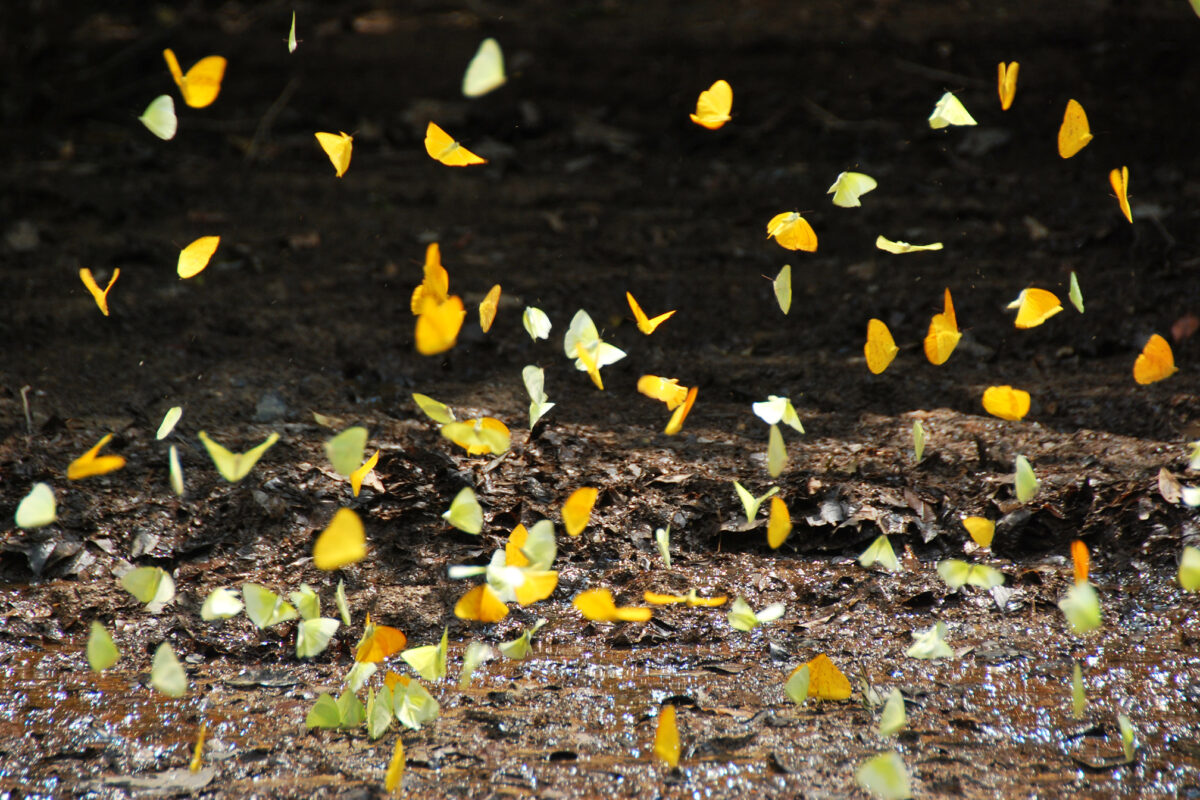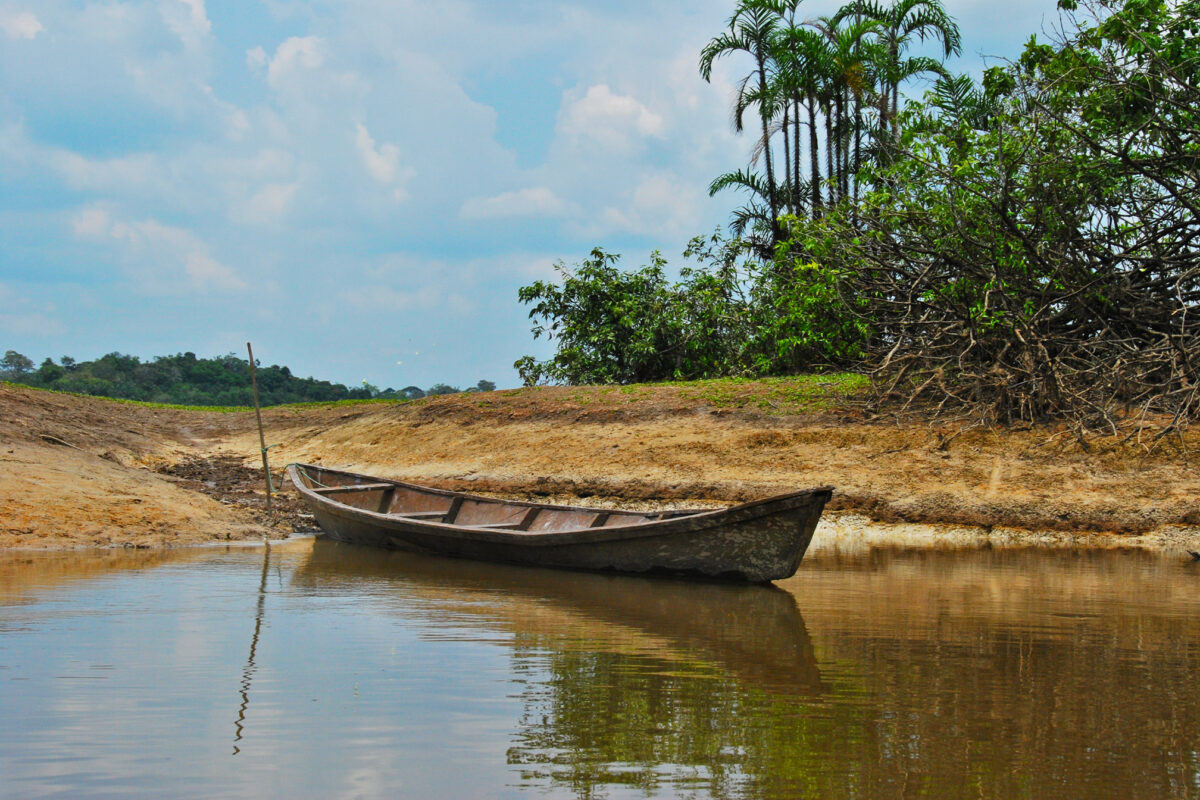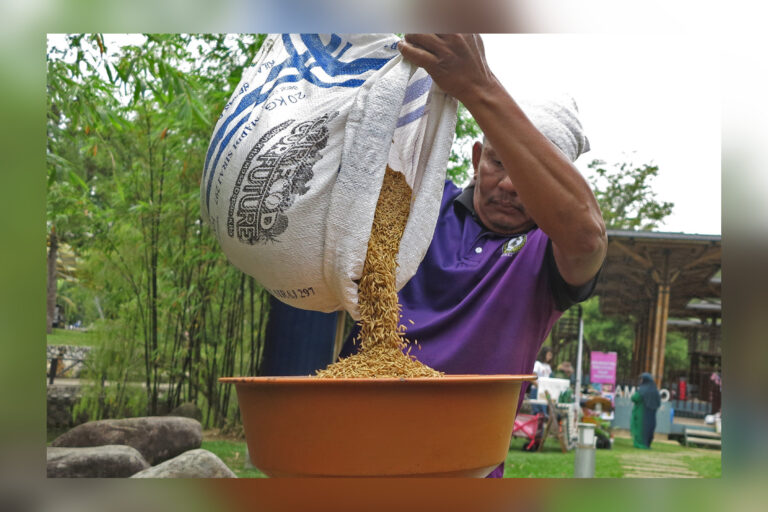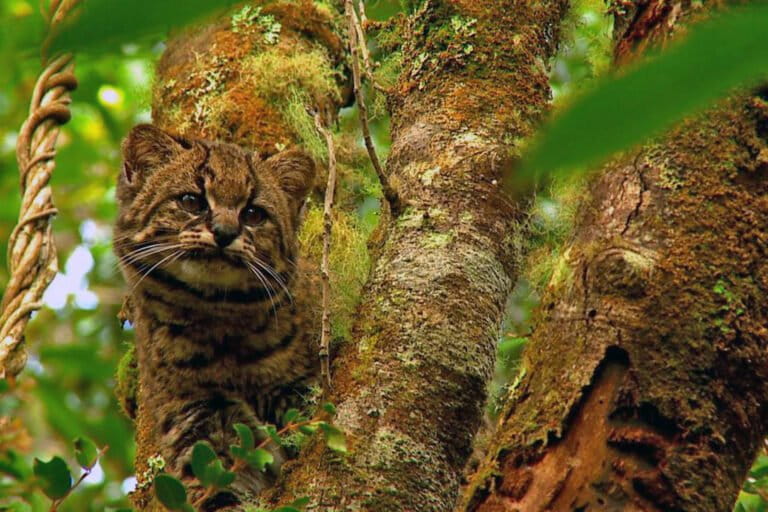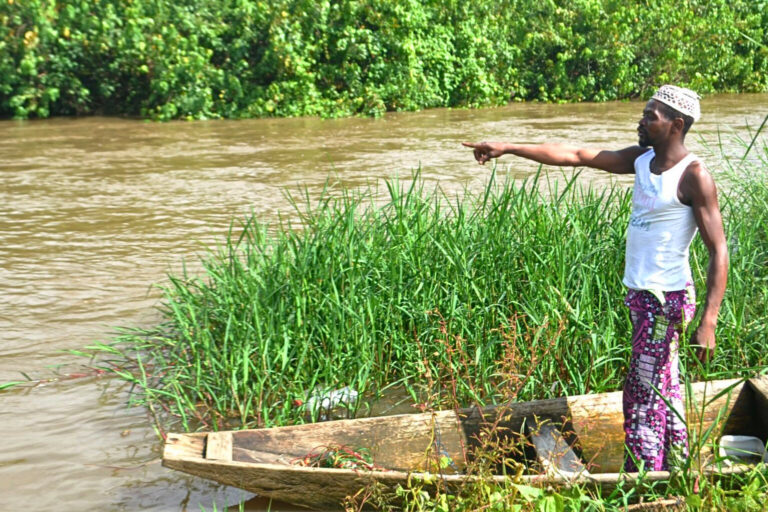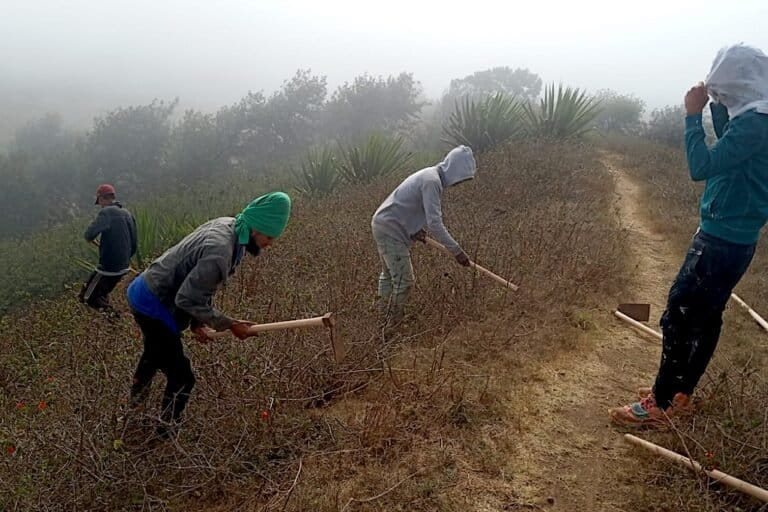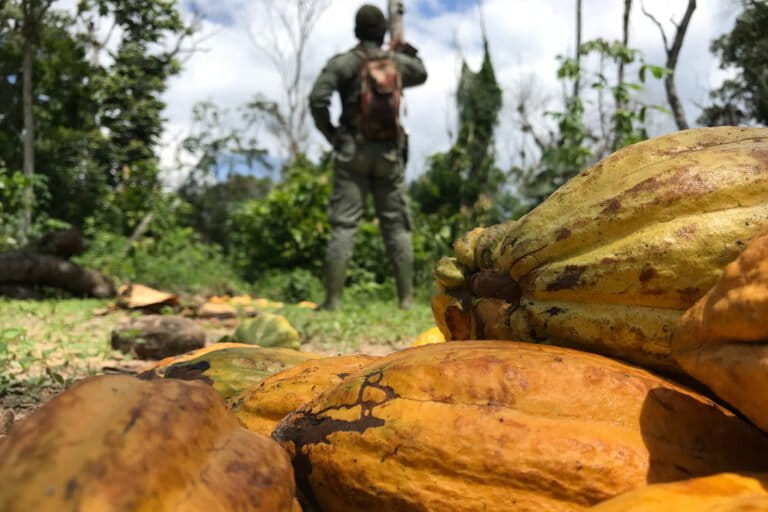Cane toads increasingly a problem in Australia
Overstaying Their Welcome: Cane Toads in Australia
Tina Butler, mongabay.com
April 17, 2005
About a week ago, an Australian Minister of Parliament from the Northern Territory sparked outrage from animal welfare groups, and probably a chuckle of recognition and commiseration among everyone else, with his comments on cane toads. David Tollner, the lawmaker in question, urged people on Australian radio to club toads to death with golf clubs and cricket bats, remarking these methods were commonplace when he was a young man, and he had partaken in such activities himself. For anyone who has had to deal with these insufferable creatures, they know where Tollner is coming from, even if they do not agree with his method of extermination.
Everyone in Australia is in agreement that the cane toads have got to go. The problem is getting rid of them. Cane toads, properly known as bufo marinus, are the most notorious of what are called invasive species in Australia and beyond. But unlike other species of the same classification, cane toads were intentionally introduced into Australia. The country simply got much more and much worse than it bargained for.
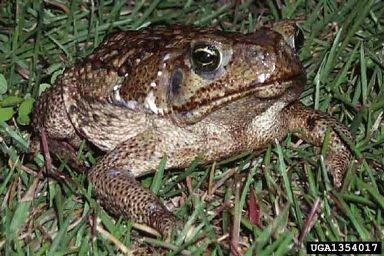 Cane toad Picture courtesy of the U.S. Geological Survey Archive |
Before 1935, Australia did not have any toad species of its own. What the country did have however, was a major beetle problem. Two species of beetles in particular, French’s Cane Beetle and the Greyback Cane Beetle, were in the process of decimating the northeastern state of Queensland’s sugar cane crops. The beetle’s larvae were eating the roots of the sugar cane and stunting, if not killing, the plants. The anticipated solution to this quickly escalating problem came in the form of the cane toad. After first hearing about the amphibians in 1933 at a conference in the Caribbean, growers successfully lobbied to have the cane toads imported to battle and hopefully destroy the beetles and save the crops.
In early 1935, a box containing 102 toads from Hawaii — one place that had already brought in the amphibians for a similar purpose — arrived in Gordonvale, a small town just south of Cairns. After a short time in captivity, the population had multiplied to reach 3000, and in July of 1935, the cane toads were released into the fields. Initially, some naturalists and scientists warned of the risks in loosing the toads and protested. After a brief moratorium, the releases resumed in 1936. Australians, know the rest all too well.
The plan backfired completely and absolutely. As it turns out, cane toads cannot jump very high, only about two feet actually , so they did not eat the beetles that for the most part lived in the upper stalks of cane plants. Instead of going after the beetles, as growers had planned, the cane toads began going after everything else in sight–insects, bird’s eggs and even native frogs. And because the toads are poisonous, they began to kill would-be predators. The toll on native species has been immense.
Having a broad range of species found nowhere else on earth, Australia qualifies as one of the world’s “mega diverse” countries, coming in at 12th place among all nations. The two largest threats to Australia’s native species are atypical; most countries with similar biological diversity face problems of deforestation and pressures from overcrowding and development. But with only 20 million people living on a landmass the size of the continental United States, Australia’s two biggest menaces to the survival of their unique organisms are brush fires and invasive species, of which the cane toad is the biggest known threat. Due to Australia’s geographic isolation and subsequently unique and fragile biodiversity, this latter problem is especially grave.
Invasive species, as a general rule, live up to their name as non-native plants, animals, fungi and even pathogens that find their way to new territory and typically have a special affinity/predilection for wiping out the original inhabitants. They are a major problem around the globe, arriving in new ecosystems and wreaking environmental havoc and often economic damage in their new homes. The World Conservation Union (WCU) lists the world’s 100 worst of these destructive pests and cane toads have the dubious honor of being the unofficial poster child for the list and one of only three amphibians held in this unesteemed company.
The Australian government has embarked on a multi-million dollar campaign to stop, or even better still, completely eradicate the toads–who did not stay in the cane fields, but rather spread all over the country. The cane toad now occupies a range of more than 500,000 square kilometers, from Queensland to the northeast corner of New South Wales to the tropical rainforests of the Northern Territory. They have invaded ecologically sensitive areas such as the Kakadu National Park and even stowed away on vegetable trucks heading south to Sydney. One very disturbing development is the amphibian’s establishment in an area of Sydney called Homebush Bay in the city’s western suburbs. Unfortunately, this same area is also the last remaining stronghold for an endangered native frog species, the Green and Yellow bell frog, (litoria aurea). If the predicted effects of global climate change hold true for Australia, scientists suggest that the cane toad’s range will expand into pockets of Western Australia and as far south as Sydney as a whole within the next 20 years.
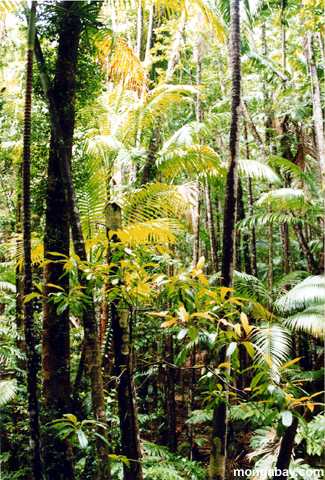 Rainforest in Australia Rhett A. Butler 2001 |
The cane toad is originally from northern Venezuela and Guyana, but the amphibians have also spread to the United States, and are especially common in Florida and Hawaii, probably because of similar climates. In Florida, the cane toads are significantly more tolerated by locals and even better behaved, this probably due to the fact that the state’s native creatures were less isolated during evolution and subsequently less fragile than Australias. Hawaii, on the other hand, has had marked problems similar to Australia, with the same kind of unique ecosystems and biodiversity.
The cane toad’s success at surviving and thriving in Australia to the degree that the species has is somewhat miraculous, because the amphibians are very poorly adapted to the majority of the country’s climate. Cane toads lose enormous amounts of essential body moisture to evaporation during the dry season — with many dying of dehydration. At the same time, this resilient species can survive a loss of up to 50 percent of their body water and temperatures ranging from 5 to 40 degrees Celsius.
Other cane toads face starvation after exhausting the food supply around water holes. These voracious creatures are capable of clearing up to 100 yard radii of all edible nutrients around water holes. Scientists and average citizens alike have noticed that cane toads are not as big as they once were. Researchers hypothesize that when the cane toads are introduced or spread into a new area, they gorge themselves on the sudden new unlimited or uncontested food supply and grow quite large. After some time in the same place, the environment is never fully able to restore itself to its former bounty, the future generations of cane toads do not have as much to eat and so none grow as large as their predecessors. Captive cane toads are reported to eat anything and everything and may grow to lengths of almost ten inches and reach weights up to nine pounds.
So despite the odds against the cane toad, the species prevails and proliferates, replenishing any loss of life and then some. This may be due especially to its impressive breeding capacity. Females lay between 8000 and 35000 eggs at a time and do this usually twice a year, with wild toads living up to five years. Approximately 0.5 percent of cane toads hatched from eggs survive to reach sexual maturity and reproduce. There are also certain developmental factors that give cane toads a specific advantage over other species. The tadpoles of cane toads develop faster than many endemic frog species, so these young can out compete the native juveniles for food. Also, in all stages of development, the cane toads seem to be more resistant to ] herbicides and eutrophic water that would generally kill frogs and their young. Further, cane toads can tolerate salinity levels up to 15 percent.
The most profound advantage cane toads have over native species however, both prey and predator alike, is their toxicity. Fish that eat the tadpoles die; animals that eat the adult toads die. Cane toads can even poison small amounts of water such as pet water dishes, causing animals to get sick without even having direct contact. Some native bird and rodent species are learning how to eat the toads without fully exposing themselves to the toxins by killing the toads and then turning them over onto their backs. By pulling away the soft skin of the belly and eating only the mildly but not fatally poisonous internal organs, the animals avoid the skin and the toxin-producing parotoid glands, keeping death at bay. This self-preserving behavior has been learned in only 60 years, which is very fast in terms of evolutionary scales.
Under duress, cane toads secrete a powerful poison. A cane toad will respond to a particular threat by turning sideways so that the parotoid glands, where the toxin is produced, are directed towards the attacker. The venom usually oozes out of the glands, but toads can squirt a fine spray if handled roughly. Like most other toxins, the venom is absorbed through mucous membranes. That the poison is secreted when the toads are under attack is the key to the biggest threat for native Australian fauna. The predators, not the prey, are at the highest risk.
Various projects have started and stopped over the years with little success, orchestrated by a government and wildlife officials desperate to control and destroy these now unwelcome guests. In the mid-80s, the government financed an effort to research and locate diseases that could be introduced to control the amphibian’s population as they did for rabbits, who also wreaked havoc on the Australian landscape with similarly prolific breeding abilities and habits, but the money ran out before the program could accomplish anything.
Currently, the Australian government is preparing to spend between five and seven million dollars over the next 15 years to combat the cane toads. In 2004, a National Cane Toad Task Force was established and the government has also sponsored a design contest that aims to develop a more selective trap, to avoid catching more welcome creatures in addition to the toads.
Presently, cane toad control efforts are largely local, with individuals and groups of volunteers hunting and killing the toads on the spot or freezing them to death. The Northern Territory, one of the most tropical and biologically diverse of the invaded areas, has independently established an Island Ark program to protect its most threatened species. Animals like the endangered marsupial, the Western Quoll, have been temporarily relocated to nearby islands, until the situation improves. Other species at particular risk are goannas, Freshwater Crocodiles, Tiger Snakes, Red-Bellied Black Snakes, Death Adders and Dingoes.
Another government project involved sending Australian ecologists to the cane toad’s native habitat to determine if there was a specific reason why the toad was not a pest in its original environment. Aside from some parasites, there was little found to determine what was regulating toad populations. Scientists did locate ranaviruses however, and some were taken back to Australia to be stored and studied at the Animal Health Lab in Geelong. The idea was to genetically engineer a Venezuelan ranavirus into something that would only kill toads and not frogs. This plan was extremely risky, as viruses are fluid and quick to adapt, mutate and spread. The Australian government abandoned work on this project in 1996, when it was discovered that a native frog, the White-lipped tree frog (litoria infrafrenata), could easily be killed by the modified virus they created.
To the great dismay of many wary of viral and genetic tampering, the Australian government has again turned their attention to this kind of method as a long-term solution to the cane toad problem. Scientists with Australia’s Commonwealth Scientific and Industrial Research Organization are currently conducting genetic experiments. One approach that is being explored involves infecting cane toad tadpoles with an engineered virus that would immunize them against a protein their bodies make when they become adults. As the toads mature and begin producing the protein, their immune system will theoretically recognize and begin attacking the protein, killing the toads. Another idea is to extract diseases from other toads species to use against the cane toads.
Those apprehensive about the risks of these kinds of ventures are encouraging alternative approaches to control and elimination. Professor Alford, with James Cook University, is working on creating scented traps that would lure cane toads to bait laced with poison. Scientists discovered relatively recently that frogs and toads have a sense of smell and use it to find food. Alford’s group of researchers is working on identifying the right scents to use. Another intriguing possibility that those opposed to genetic experiments hope scientists pursue is the study of the Lavender Beetle. Common in the Northern Territory, the Lavender Beetle is apparently poisonous to amphibians. Endemic frogs know to avoid the beetle, but cane toads do not, and when they eat the insects, they die.
Regardless of the method, the Australian government needs to find success in controlling these animals. Cane toads are a serious and ever-growing problem that prey on native fauna, compete for food, and carry diseases that may be transmitted to endemic frogs and fish. Often times people do not recognize or appreciate the importance of biodiversity in ecosystems and lack sufficient knowledge about their natural surroundings to realize where there is a disturbance within it. By the time an invasive species attracts widespread attention, it is usually far too late. Australia has been more successful at garnering public support for control measures against the toads because the government has stressed the threat to agriculture. The economic loss resulting from the disturbance and destruction caused by invasive species is huge.
So returning now to Mr. Tollner’s controversial remarks from last week, almost all Australians, save for only the most rabid of amphibo-philes, agree that the cane toads must be destroyed. Despite the vigorous and colorful means of destruction, Tollner’s method is inadvisable beyond its basic cruelty, as cane toads are likely to spray poison under the intense blows of a club or a bat, with the assailant running the risk of being temporarily blinded or worse. It is better to do as animal welfare groups suggest as the most humane and practical mode of killing, which is to put them in the freezer for a few hours and dispose of them.


